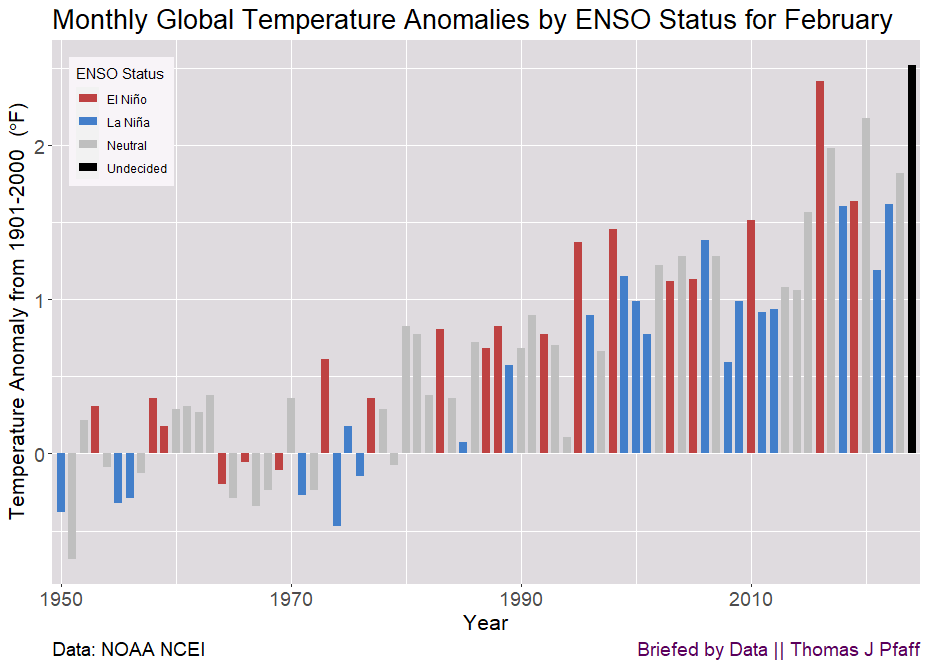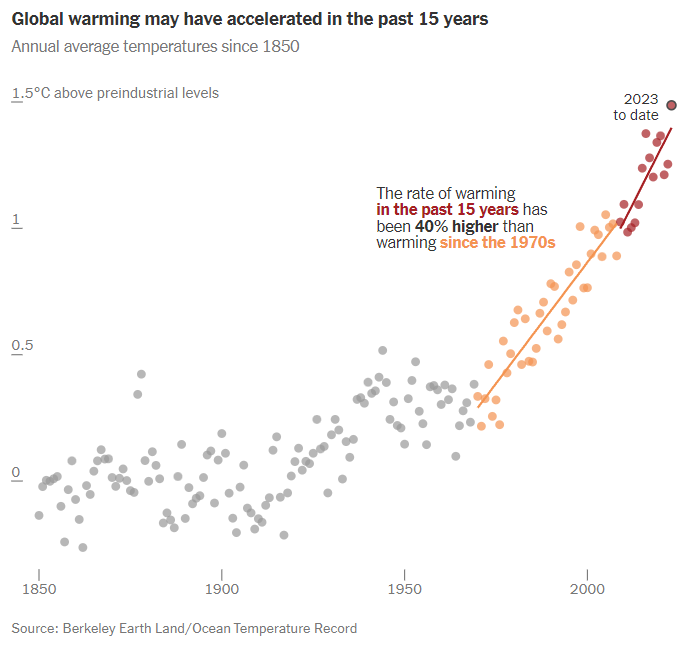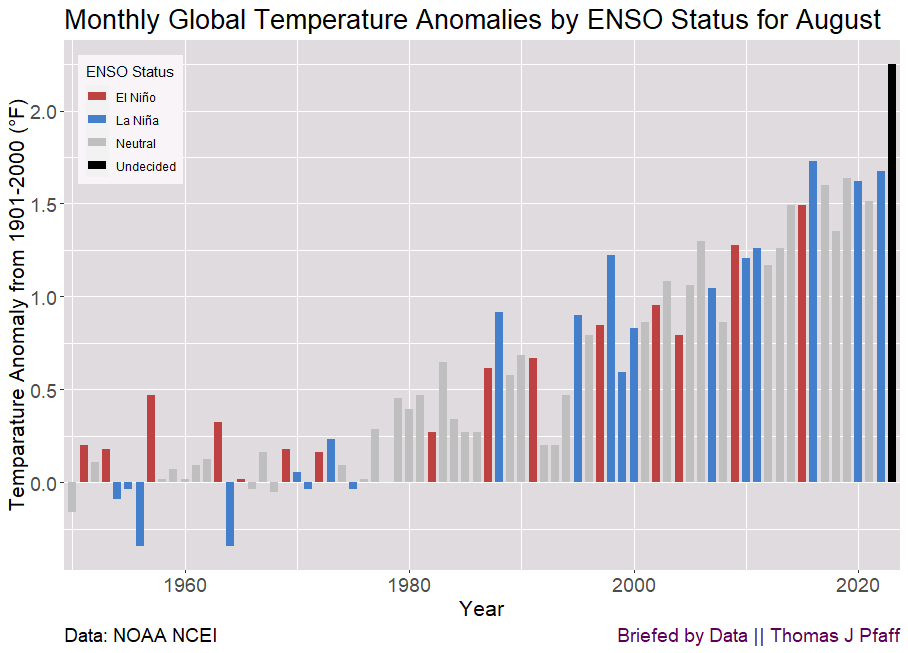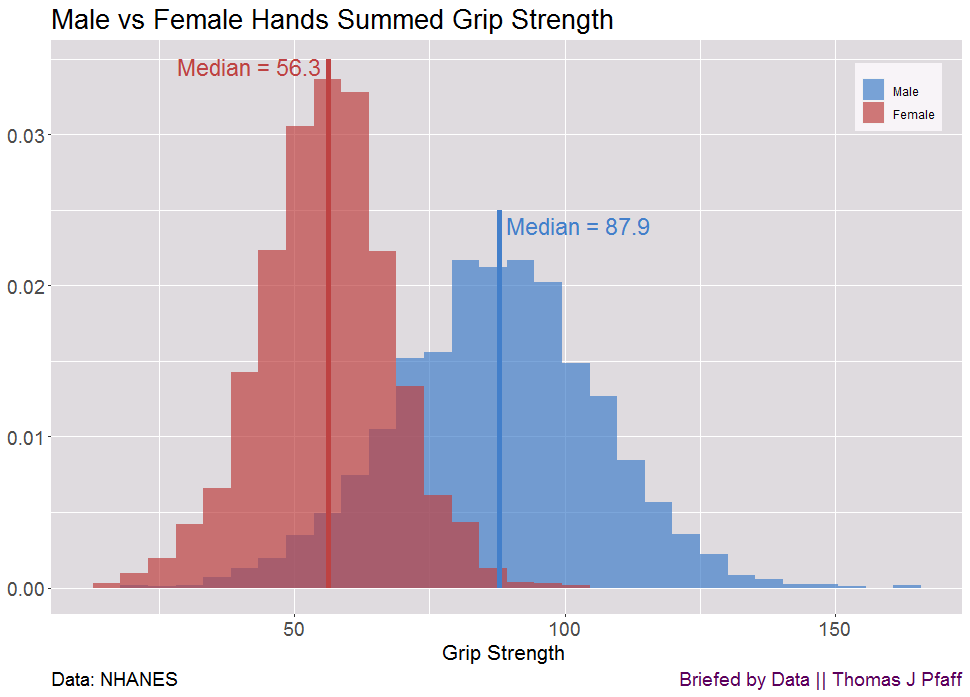With El Niño still hanging around April set a record, but it is in the pattern we would expect. A record, but not surprising.
Here is what NOAA has to say for April 2024 (data can be found there):
Global land-only April temperature was warmest on record at 1.97°C (3.55°F) above average. The ocean-only temperature also ranked warmest on record for April at 1.03°C (1.85°F) above average, 0.17°C (0.31°F) warmer than the second warmest April of 2023, and the 13th-consecutive monthly ocean record high. These temperatures occurred as the current El Niño episode nears its end. El Niño conditions that emerged in June 2023 weakened further in April, and according to NOAA’s Climate Prediction Center, a transition from El Niño to ENSO–neutral is likely in the next month, with odds of La Niña developing by June–August (49% chance) or July–September 2024 (69% chance).
You can find the all-month graph and other news over at the Briefed by Data post QTRS.









